Visiting Leaders Pitch Pro Stadiums — And Transit!
MMAC organized event to sell NBA arena, but speakers from Cleveland, Denver and OKC said Millenials want transit, too.
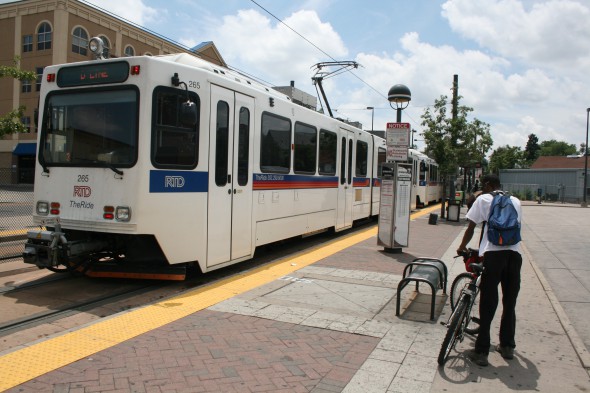
Denver Light Rail as seen in 2012. Photo by Jeramey Jannene.
Civic leaders gathered this morning to hear success stories from Cleveland, Denver, and Oklahoma City. Tim Sheehy and the Metropolitan Milwaukee Association of Commerce, as part of their Cultural and Entertainment Needs Task Force, hosted the guest speakers at the Marcus Center for the Performing Arts for a discussion on the success of their cities. Moderated by Sheehy, the discussion centered around what steps the cities have taken to attract new businesses and residents. The big surprise — certainly for Sheehy, it seemed — was how much the speakers emphasized the need for good transit.
Kelly Brough, president and CEO of the Denver Metro Chamber of Commerce, had the most straight-forward quote of the day. Speaking about millenials she said “this generation wants transit, they want amenities. They want it all downtown.”
The leaders from Denver and Oklahoma City began their remarks by noting all the lists they’re on, and how those two cities are similar. Joseph Roman, president and CEO of the Greater Cleveland Partnership, had a different message though. He noted multiple times how Milwaukee and Cleveland are peer cities, and appear on the same lists (he didn’t mention any specifically, but his attitude indicated they weren’t the same rosy ones Denver and Oklahoma City are on).
Roy Williams, president and CEO of the Greater Oklahoma City Chamber, noted that in Oklahoma City “we all followed Richard Florida.” But he mentioned for a long time most of them didn’t believe in Florida’s creative class gospel. He noted that they’ve now changed their mind and when it comes to attracting millennials, it is all about place. Williams said Oklahoma City has 130,000 college students in the region, and has managed to increase from a graduate retention rate that was below 50 percent to its current rate of 90 percent. He, too, emphasized that young people want transit and amenities, and Oklahoma City has been able to figure that out with their MAPS (Metropolitan Area Projects) program.
Joseph Roman said Cleveland couldn’t expand their transit system between the city’s two hubs (Downtown and University Circle) until both were thriving. According to Roman, the link they built between the two, the bus rapid transit Health Line, now has economic development at every stop, and has played a part in the city’s revitalization.
Those in the audience seized on the discussion of transit. Nina Jones, executive director of the Bel Canto Chorus, asked about how the other regions achieved their transit success. Brough, a former Chief of Staff to Denver-mayor-turned-Colorado-governor John Hickenlooper, jokingly noted that the key to their passing FasTracks (a sales-tax funded, multi-billion dollar transit expansion to eight counties) was traffic jams. On a more serious note, she noted they had failed a couple times to pass legislation, but were finally able to build a large enough coalition that yielded a project that has been “transformational for us.”
Professional sports stadiums were central to the conversation, and frankly were the reason the MMAC was willing to fund this event. The MMAC has made no secret of their desire to see a new arena for the Milwaukee Bucks, lest they become the Seattle StarBucks, given the NBA edict that Milwaukee build a new arena by 2018.
Each of the chamber leaders had their own story of how they handled pro sports. Cleveland used revenue from an alcohol and tobacco tax to replace an outdated Cleveland Municipal Stadium for baseball’s Cleveland Indians and move the NBA’s Cleveland Cavaliers downtown, but also lost the Cleveland Browns to Baltimore (only to get a new team after agreeing to build a new stadium with public money). Denver spent aggressively to land a new baseball team and build a downtown ballpark, built a new football stadium on the edge of Downtown, and built a new NHL/NBA stadium, all using different sources of funding. Brough noted that Cleveland’s recent sin tax extension to pay for maintenance of the facilities was smart, which served a word of caution that maintaining massive public buildings might cost as much as building them in the first place.
Oklahoma City took the most unusual trek to landing their professional sports team and arena. As part of their MAPS program, voters approved building an arena, but without a big-time tenant and with a provison that no bonds be used. The arena thus could only be constructed once all the funds were in-hand (lowering the cost to build the arena by eliminating the interest expense). The city hoped to lure a NHL franchise, but lost out to Columbus, Ohio. They ultimately got the NBA’s Oklahoma City Thunder after a group of Oklahoma City businessmen bought the Seattle SuperSonics and saw efforts for a new arena fail in Seattle. Williams said he was glad to have a pro sports team and had gotten sick of only being asked about college football when he flew somewhere. He noted that professional sports crowds are more representative of the community, while college crowds are made up of students, alumni, and donors.
Roy Williams of Oklahoma City, a city that until recently wasn’t known for its urban environment, closed his remarks by warning that Milwaukee faces an urgent issue, because the country is becoming increasingly urban and there will be winners and losers when it comes to regions.
With so much emphasis from outside leaders on the value of transit, will it be added to the discussion here? It should.
Worth Noting
- The MMAC handed out a packet with background information on each chamber leader. The page featuring Roy Williams and Oklahoma City had a great skyline photo on it,, but unfortunately it was of Minneapolis.
- The room was packed with heavy hitters from various areas of Milwaukee. While I couldn’t possible name them all, he’s a short list of those I spotted before the program started. Convention center czar Frank Gimbel, Bradley Center director Steve Costello, county development director Teig Whaley-Smith, LISC head Leo Ries, city lobbyist Jennifer Gonda, host Paul Mathews, a large crowd of Common Ground supporters, Marcus White from the Greater Milwaukee Foundation, Rob Henken from the Public Policy Forum, VISIT Milwaukee head Paul Upchurch, Ald. Robert Bauman, Museum of Wisconsin Art director Laurie Winters, GRAEF leader John Kissinger, DCD commissioner Rocky Marcoux, state reps Evan Goyke and Mandela Barnes, long-time Herb Kohl deputy JoAnne Anton, CARW president Tracy Johnson and two-thirds of the NEWaukee brain trust Ian Abston and Angela Damiani.
- Roy Williams noted that Oklahoma City is welcoming 2,500 new residents a month. Our local apartment boom seems insignificant in comparison.
- I had previously opined that if $250 million in private dollars was offered for the arena, I would be okay with the public paying for the rest. Assuming that naming rights aren’t part of the $100 million from the new Bucks owners, we’re very close to that number.
- New Bucks owners Marc Lasry and Wes Edens shot down the lakefront arena idea this week, thank god. An arena on the lake would be an awful use some of Milwaukee’s most valuable land. Not to mention the many logistical flaws with the plan… There is no transit service to the lakefront. There isn’t nearly enough parking on the lakefront. You can’t generate spin-off development on the lakefront because of the Public Trust Doctrine. You can’t watch a game and look at the lake at the same time. The NBA season is in the winter, when the lakefront is at its worst… The trend of putting high-rise buildings that overlook the string of parks along the lakefront is the way Milwaukee should proceed, generating significant property tax revenue from an unimpeded view atop bluff, while maintaining a great public asset below.
Coming Up
- The Milwaukee Streetcar project will host a Streetcar Social at Taylor’s on July 29th from 5 until 7 p.m.
- The Downtown Neighbor’s Association is hosting a candidate forum for the 19th District Assembly race to replace Jon Richards on July 21st at Centennial Hall.
Eyes on Milwaukee
-
Church, Cupid Partner On Affordable Housing
 Dec 4th, 2023 by Jeramey Jannene
Dec 4th, 2023 by Jeramey Jannene
-
Downtown Building Sells For Nearly Twice Its Assessed Value
 Nov 12th, 2023 by Jeramey Jannene
Nov 12th, 2023 by Jeramey Jannene
-
Immigration Office Moving To 310W Building
 Oct 25th, 2023 by Jeramey Jannene
Oct 25th, 2023 by Jeramey Jannene


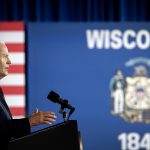
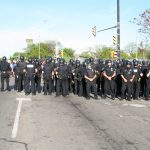
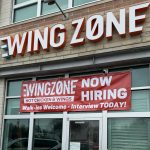
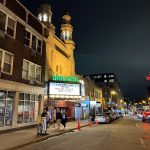
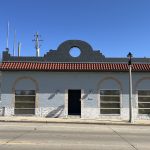




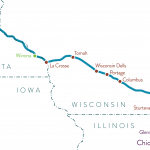



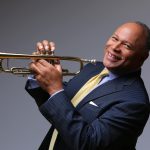

That’s pretty sad and telling if Sheehy was truly that surprised upon hearing about the importance of transit. It means he hasn’t been paying any attention whatsoever to what attracts people, especially young people, to a city.
He didn’t explicitly say anything on the topic, so I can only infer based on the questions he did ask. It did come up consistently, and Sheehy never touched it other than a single question (why did Cleveland’s sin tax extension not go towards transit or schools). The answer to that question involved that Cleveland took separate actions including a large property tax increase and a teacher performance review process change to address schools. Kelly from Denver noted it’s a false choice to do one or the other.
I would have suspected if he was expecting significant discussion on it, that he would have had questions related to the issue. It remains absent from the discussion at this point, despite other cities saying how important it is.
That’s a real shame Jeramey. Thanks for sharing.
It is time for Mr. Sheehy to get outside of his box. We can’t afford to have tunnel vision on this momentous opportunity to move Milwaukee back into the spotlight of pride of place. Not only did the 3 speakers talk about transit, but they also talked about parks and recreation as key points for millennials. Ms. Brough talked about Denver recognizing the need for a smart healthy work force and bragged about their miles of trails along with their parks. Mr. Williams noted that Oklahoma City citizens recently voted to extend their one cent sales tax for a $130 million parks improvement & development project, expected to be completed in 2021. Mr. Roman referred to the property value increases that occurred with development of a large park in Cleveland. Parks, Recreation and Culture touches everyone, no matter what their income is. Parks are community builders. And the ultimate payback comes from higher property values and healthy active residents.
Good piece JJ !! As you can read from my proposal to locate Arena between Potawatomi Casino/Hotel and Marquette, just blocks from Amtrak Intermodal…I have taken seriously the importance of transit links and to be clear, adding expanded transit into the construction project of Arena as part of the public value that comes with them seeking taxpayer assistance. I do not favor a tax increase, which would need to pass the State Legislature and be signed by Governor. Instead, I favor using more creative TIF development and contributions from private sector investors, to create a taxpaying facility. I find the irony and disconnect with Milwaukee business leadership when it comes to paying for an Arena or “entertainment district” (anyone remember the Hard Rock hotel being proposed at Pabst complex…hello??!!) yet, getting a transit tax, helping the City deal with PSC and Walker on downtown Streetcar, lobbying for more transit spending in State DOT budget or as part of I 94 reconstruction…failed bid for High speed rail to connect Chicago/Milwaukee/Madison/Twin Cities…lost construction jobs in high unemployment area of Milwaukee (talgo); all of these items have one thing in common: Zero zip zilch help from MMAC, Sheehy or his power brokers. And, I have not even touched other high priority needs where business leaders could have stepped up to the plate to defend Milwaukee: Mayor and Legislators like myself, calling last cruel, violent summer for more public safety dollars from Vos and Walker, the Walker decision to turn away hundreds of millions of Federal health care dollars, which could be helping Milwaukee hospitals enormously, especially St Joes and Sinai which serve many poor folks. Then theres expanding voucher schools to help more middle class families while cutting spending to public schools. I better quit while I’m ahead here, the list is dizzying and giving me a headache. Here is the link I reference: http://urbanmilwaukee.com/2014/07/15/op-ed-a-common-dream-for-metro-milwaukee/
Thanks, Josh. That list is long and painful. The city needs all hands on deck; for some, however, it seems to mean deck chairs.
A Valley arena is a bad idea. To start with its a bad location. Second, what will you tif? There are not many businesses in the Valley. I know you rep the Valley and you would like to throw the Potawatomi tribe a bone but there will be no economic spin-off from this location. Only the Potawatomi will benefit. As far as transit is concerned, why leave it up to the MMAC. Why haven’t CEOs or other business leaders stepped up? Furthermore, you’re adding tens of millions to the cost of future transit system to connect the arena if located in the Valley It’s a terrible idea – please stop pushing it.
Taxes need to stop being a bad word worthy of never being muttered in Milwaukee and in Wisconsin in general. They key component that links these three highlighted cities together, is that each saw a value in raising a tax to fund infrastructure. One only needs to take a look at how expansive Denver’s transit system has become in the past 15 years by their P3 and regional tax that has funded their RTD. In less than two year, every major component of the Denver regional area will be linked by commuter rail, light rail, bus, or BRT. And to see their job growth, economy health, public health, and educational rates climb to the point where people and businesses are PAYING the city and state to MOVE THERE. Unlike here in Milwaukee where the city and state bend over backwards to provide tax breaks to businesses that are STILL NOT moving here.
Milwaukee wants to become a world class city? Great, good luck. But when the residents refuse to help pay for the very infrastructure they would use, and expect city and state governments with ever dwindling budgets to magically pay for them (or worse yet pull a Walker and borrow on the future to balance a budget today), Milwaukee will never come close. Instead it will remain a disjointed collection of cities who all think they are world class when they are not even the class of the region.
Travis –
The property taxes for typical Denver residence, worth $225,000, are $1,506. In Milwaukee that would be about $6,750.
The state income tax rate in Colorado is 4.63%. In Wisconsin it is 6.27%
The sales tax in Denver is 7.62%, in Milwaukee it is 5.6%. You would have to spend over $250,000 a year in the city of Milwaukee alone to make up for the difference just in property taxes.
It’s pretty disingenuous to accuse residents of refusing to pay for infrastructure when they are already paying so much already.
Thinking small, isn’t easy or hard. It’s just a habit. A habit with consequences.
Same for thinking big.
David, You have already expressed your opinion more than once, but you offer no alternative and frankly don’t have your facts straight on my own idea which I will push as long as it makes sense. The debate is just starting, why shouldn’t elected officials offer their perspective at this juncture? Last time I checked, we live in a democracy.
For starters, the TIF would include the Arena footprint and nearby but not necessarily contiguous parcels needing redevelopment. The area I suggested, while not at all perfect, PAYS NO TAXES right now David. The new Arena would be worth hundreds of millions and under my proposal would become a TAXPAYER.
There is no money anywhere right now to further construct the Downtown Streetcar; City got shot down by Feds over last several years, and thanks to failed business community and political leadership we have no METRA extension or High Speed rail connecting Chicago, our Airport, Milwaukee, Madison, Twin Cities.
So, by having the Arena TIF, pay for streetcar route extensions, you would see not only increased value from the blighted property that I already factor in, but there would like be other increases likely, given that I see any property being served by transit like that, to see more business, and have more long term value.
In other words, my idea does just the opposite from what you state: it would take TIF redevelopment dollars, no tax increase, and would connect currently underutilized parcels that are anemic or near zero in tax base.
You realize, City already has plans to expand Streetcar to Potawatomi and Miller Park, as well as points Northwest and toward Airport….duh!!!
To date, you and/or anyone else, fails to coherently explain why a location that is walking distance to Marquette, Convention Center, and Amtrak, along with near Interstate ramps….is bad for a basketball arena, most games played during cold or otherwise crappy weather?
I mean, seriously….what DO you want on Canal street across from Casino Hotel? Right now, its an ugly useless nontaxpaying Recycling center and a bunch of City trucks and garages. Thats frickin brilliant David….go get some sleep!!
@Rep Zepnick To be clear “David” is a different user than me. Though I agree with him and I don’t see the advantage to the valley site, and quite frankly think it will add cost to the project (new garages, demolitions, environmental cleanup…). And lets say we assume, that somehow, we can use TIF for the Arena and that it would be a taxpayer (an idea I find very unlikely) this would be true at any other location then would it not? If so then the logical spot for the Arena is just north of the existing Bradley Center, as it offers existing parking, firmly on the planned streetcar route, no loss to local entertainment industry, and excellent freeway access.
Duh? A little defensive are we Rep. Zepnick? I never knew you were so sensitive. I, as you, have expressed my opinion about this subject more than once. And please don’t say that I don’t have my facts right. I merley asked you a question about how the TIF would work in the Valley. And yes, me and everyone else has laid the argument for a downtown arena. You’re on own with this one. I take that back, you and Potawatomie.
No Dave, not sensitive…just find it creepy when someone repeatedly hides behind veil of anonymity and takes the armchair cheap shot low road. We do not even know each other and I prefer to keep it that way. Along with my proposed location, my letter to Bucks owners (have you actually read it?) outlines 7 key priorities that I think are important to the discussion. Please help us out here Dave, and point out which one of 7 items you think should be thrown out.
To your question (and Dave Reid). Property north of Bradley Center is Park East, correct? PRIME REAL ESTATE with market value, not blighted as required by use of TIF. So, cancel that option right off the top. And, should someone at City/County get off their ass, we might actually have taxpaying development (housing, hotel, grocery, retail, dining, etc.) in that location. You do realize, your hero John Norquist could and should have used TIF to tear down the Park east spur, and pay for construction costs from the incremental value of land rebuild. Instead, after getting millions of Federal dollars literally taken away from Milwaukee and given to other cities (Probably Denver or Portland) Milwaukee sat idle, because we could not forge agreement on transit spending.
So instead of having the East West corridor already finished by now with express/bus rapid transit, commuter rail online….we spent money tearing down a freeway. Only reason that area looks halfway decent right now, is because the State rebuilt the Marquette Interchange paving the way for the new configuration at McKinley.
And, should convention center expand, its going north not south. and, that is also a good thing and development that helps the Pabst, Park East.
But, put a tax exempt, publicly subsidized arena in those locations: No TIF, no increase to tax base, and mega bills to pay. Bucks attendance over last three years? Avg. just over 14,000. the OLD Arena fits 12,000. Think about it. My constituents are not begging to be be held up at gunpoint by greedy NBA. All while paying taxes for numerous other projects already…not to mention, pent up community frustration with roads, transit spending, public school funding, etc
Not counting the likelihood, that public dollars prop up competition to existing taxpaying entertainment venues. We had this community debate already, it was called Hard Rock Cafe/hotel.
While I hear your dissent and respect those who share such view…I would be happy to learn, just how the tax increase passes the State Legislature or County Board or City Council. have a great day! I guess meantime, we get to watch the ironically timed, “see ya” downtown tv commercials instructing us all to try and find parking and spend more. that’s a CYA all right…sad.
Following are what I consider 7 key priorities for a new Arena project:
1. Avoid the current footprint of Bradley Center and tear down
2. Insist the Wisconsin Center district is at the table so that Convention and hotel space can be
expanded in near future
3. No sales tax increase
4. No diversion from the general fund, known as a Super TIF
5. Project Workforce agreement to have Union labor build the new facility, with an emphasis to
hire Milwaukee’s unemployed and minority citizens
6. Build off links to Interstate system and Public Transit
7. Set-aside portion of future arena revenue stream to Milwaukee parks and recreation facility
upgrades and maintenance for youth, public use
@Zepnick No not in the Park East.. The site is right next to the Bradley Center it is just north (they actually just tore a building down here and it does fit). I’m well aware Norquist traded away transit funds to get the PE torn down (he also compromised on the size of McKinley and not tearing down 794… both items that I’d have liked changed but understand that he compromised on) though I doubt we’d have gotten anything at all hadn’t he not done so. I’ll followup on 1 to 7 later.. time to get the day going!
1.) Avoid the current footprint of Bradley Center and tear down.
….. I think we both agree on this issue.
2. Insist the Wisconsin Center district is at the table so that Convention and hotel space can be
expanded in near future.
….. At the very least, they should be at the table. The Wisconsin center Board and Bradley center Board should be combined. I’ve heard rumblings about merging the two but I’m not sure how serious they are.
3. No sales tax increase
…. I’m not totally opposed to a modest sales tax if it was also used to provide dedicated funding for selected cultural amenities.
4.No diversion from the general fund, known as a Super TIF
….. I am also not opposed to a Super TIF. I would argue that much of the land west of the Milwaukee River is blighted. I also believe that if developed correctly, the new arena could redefine Westown and points north and generate economic development and create jobs.
5. Project Workforce agreement to have Union labor build the new facility, with an emphasis to
hire Milwaukee’s unemployed and minority citizens
….. I am not opposed to this requirment. However, many believe that development in the Park East has been slowed by this requirment. A new arena will be union built.
6. Build off links to Interstate system and Public Transit
….. I agree. Downtown Milwaukee is very easy to access from the interstate and Downtown Milwaukee is very well served by transit. We may not like the fact that it is bus only, but we are well served. In addition, Milwaukee is pedestrian friendly and walkable. The Valley is none of these things right now. Downtown is also served by a TON of parking. It is one of the easiest big cities to find parking.Expensive structures would need to be built in the Valley.
7. Set-aside portion of future arena revenue stream to Milwaukee parks and recreation facility
upgrades and maintenance for youth, public use
…… I am not opposed to this. It would be great if this could happen.
My problem is the location. You say that I don’t have the facts right, but I’m not seeing any facts from you. You’re making a lot of assumptions and have a lot of opinions. I believe a new arena should be in a location close hotels, restaurants, the WI Center, existing transit and walkable. In addition, it should be developed in such a way that we see further development surrounding the arena. None of this happens in the Valley. I love what MVP has accomplished there, but it is not a good site for an arena. I’ve said this all along – and my opinions are as valid as your OIPINIONS. None of what I’ve written is a cheap shot. I don’t appreciate the angry tone and name calling.
Dave, your opinions are just that. You do not have to respond to any voters and you do not even share your identity. But so long as you are calling me over sensitive, what name calling did I do or use of angry words? I cannot find one example, other than I said, you come across like you think you know me, my intentions, and I just find it creepy. Sorry if that offended you. But, lets get back to the real discussion and, since you agree with most of my stuff just not Location. Let’s do this:
Dave Reid mentioned location, north and west of current Bradley Center. I cannot find any empty spaces, other than Park East corridor. Unless you tear down parking lots across from MATC, the Police HQ and Courthouse.
If thats the case, please explain how this area is somehow either superior to 13th and Canal; OR, how an Arena along 6th Street is going to lead to economic spillover and bring more people Downtown?
After all this back/forth: no one has explained to me, how the Downtown project gets paid for. And, I asked the other day: show me path to getting the tax increase through the Capitol, let alone County and City.
And, if its only Milwaukee County taxpayers, why? Seems totally unfair to my District constituents let alone others
My reference to asking for FACTS was simple: Show me why you believe my TIF plan is not workable. Show me where you get the public dollars for Downtown off N. 6th Show me what transit that location is linked to and if new Arena is a tax exempt, partly publicly owned building (along with expanded Wisconsin Center also non taxable), how is this helping the City tax base?
Frankly too much of Downtown is currently subsidized, Jesus H, Grand avenue and Boston store would be an empty parking lot if not for taxpayers. And, we subsidize much of Westown…State office building, Museum, Courthouse, Police HQ, Muni Court, MATC, Convention center, old Arena, Bradley Center, Auditorium,
And, each day, each year that the Park East sits idle or large swaths of Valley are owned by City or NonProfits, is lost revenue to Milwaukee and missed economic opportunity.
And, maybe I’ll close there: I suggested my idea as way to impact the discussion. I think this turkey is far from a done deal and I have serious distrust of some of the key players. But, I am open to other locations whether in Valley (west of 16th) or in other “Under-utilized” areas where TIF could be used for public portion instead of a tax increase. Hell, put it by the Airport. or near King Drive…
But based on my own experience as well as that of other American cities: I am not convinced a Downtown site, is either necessary or the best for overall economic development. I am always, willing to listen. And if you want my email, we can chat offline going forward…Adios!!
@Zepnick Again not the Park East. The area of land (like I said is right next to the Bradley Center) is yes basically all parking lots (and again buildings have already been removed to open land here.. i.e. a former MATC building), which is why it is perfect to build on. “After all this back/forth: no one has explained to me, how the Downtown project gets paid for.” Well you haven’t given a realistic way to pay for it in the Valley either? I know you say TIF but if you actually think TIF funds could be used to build an Arena in the Valley then that same mechanism can be used with the downtown site, both will meet the but for clause no problem. But since the likelihood of an Arena paying properties, in my estimate, is pretty low I have a very hard time see the significant use of TIF regardless of site.
PS Downtown subsidizes the neighborhoods… not the other way around. Look at property taxes paid, then services used (police, schools….).
Thanks for clarification Dave Reid, I would be happy to talk in person, as this format has limitations. As I state in my letter, I have served on the TIF review committee of the Legislature (State and Local finance) and currently the ranking Democrat on a study committee formed via Legislative Council to review/improve Wisconsin TIF policy—hint: it’s broken.
I’ve worked a great deal on these matters and seen how many TIF districts are in trouble throughout Wisconsin, as well as, areas that fail the “but for” clause but have political muscle to get a deal done. Not a pretty picture.
To be clear: using TIF across from MATC to take down a parking structure is not the same math as a blighted area not paying property taxes. That property has enormous value already and the area I carved out is paying zero and even without my arena idea, higher use/tax base expanding development is deserved across from a major Casino/Hotel, not DPW garages and junk yards for Waukesha County.
And, with expanded convention center and new hotel and related amenities go in, that sucks up a lot of property at existing Bradley Center site or the site you propose. Having a hard time taking seriously that there is enough room, given that is one of the chief complaints about Valley sites (along with not being downtown)
If I owned land there, I would work with Convention center and City DCD, and build live/work space for student apartments for MATC, Marquette and UWM folks working in fields that they could do spinoff, incubator type business development, all downtown and where they live, study, work and play.
My entire proposal is based on single premise: valuable land that has tax base promise, should not get eaten up by a part time arena that not only pays zero taxes, but requires public subsidy to stay alive. Very simple and straightforward…I’m open minded to other locations, so long as they fit that economic criteria. Your site does Not by a long shot.
And it is factually incorrect, can provide evidence to you: downtown does not subsidize Milwaukee neighborhoods and if you were to say that in City Hall you might likely cause an angry mob or revolution.
Here’s the dealio: East of River consumes way above average in public services, amenities. they get the first class police coverage, new roads, boulevards, transit, park spaces, special events/festivals, etc. Home to some of Milwaukee’s highest income earners and elite.
West of the River, as we’ve discussed, is overbuilt with nontaxpaying government owned properties.
Explain with actual numbers, how you think Downtown subsidizes city hoods, when the list I provided (MATC, State and Federal office building, Museum, Jails, Courthouse, City owned parking, Bradley Center, Arena, Convention center, etc.) all pay zero taxes and require taxpayer support to keep the lights on. And Grand ave mall is choking, if not for taxpayer help it would disappear entirely.
What might be more accurate: is that downtown economic activity and specifically tax revenue, subsidizes non-Milwaukee consumers of public services. In other words, downtown money coming in helps cover bills for people who either do not live in city/county of Milwaukee, let alone the State of Wisconsin.
That is one of key arguments in favor of existing tax to cover the Wisconsin Center bills–visitors help pay via sales taxes on downtown spending. Which is yet another reason, why I want them to expand and generate the kind of economic spinoff that conventions will bring, along with more and more downtown housing West of river. Need taxpayers there and not just once in a while, but 24-7, 365
Because, I fail to see a basketball arena, generating as much spillover. While there is small percentage of Bucks fans that stick around before/after games….statistics, history shows us it ain’t much and unlikely to grow just because of a new facility. in fact, just opposite. in order to meet demands of NBA and team owners: emphasis will be on “cmon down to new toy in town, and we’re gonna gouge you on everything from tickets to food/beer to parking” and, while we’re at it, we need your tax dollars to provide this luxury to you. Cheers!!
I’m going to step in to referee on two things.
1. During the streetcar debate multiple people from city hall noted that downtown pays 13% of city property taxes, while having only 2% of the land. It does subsidize the rest of the city.
2. There is a sizable amount of land north of the Bradley Center, south of Juneau between 4th and 6th. This does not include the MATC/Bradley Center parking structure. There is only one building on this land, a one-story structure at 5th and Juneau.
@Jeramey Thanks… And just to make it a little more clear for Rep. Zepnick. There are 10, yes just 10, condo buildings in downtown Milwaukee that pay more in property taxes then 2 Aldermanic districts. Yup downtown Milwaukee subsidizes the neighborhoods.
Thanks for the numbers, but your math is wrong. First: The corridor you reference JJ, is indeed high value, property taxpaying condo development along streetcar route. But, using 2% of city land only proves one thing: the development go up in the air not horizontal. so what? that does not negate, those residents are getting proportional public services as result of their wealth: newer roads, new transit, better parks/boulevards, subsidized special events and festivals, enormous police protection, etc. They ain’t subsidizing the poor, any more than my quiet, tree lined modest home south side block which consumes far less than Downtown residents, in terms of public services
And to DaveReid point; all your numbers show is disparity, huge gap between haves and have nots—- not downtown subsidizing entire city…which is false when you include consumption of services. To be sure, those 10 condo buildings you reference, are all East of River, correct? And, the two aldermanic districts you reference, are likely high poverty/crime and highest number of foreclosed properties, correct?
So when you add west portion of downtown and you expand convention center (yes this will happen) and add a bigger, nontaxable Arena, you ain’t got a downtown subsidizing neighborhoods my friends.
I could just as easily say, that my District homes subsidize the rundown parts of Milwaukee’s north side, as could Milwaukee’s Southwest side, Bay View, Uptown/Story Hill, Washington Highlands, etc. When Police are called in those strong value neighborhoods, cops are often tied up with two areas: high crime/poverty census tract or downtown/wealthy areas.
Is there any way we three could agree that we have some common ground in our thinking and are each intelligent and creative enough, to discuss this offline and over beers?? I’ll buy first round….While I might come across edgy (born that way, March 21 aries) I enjoy the debate and learn from your feedback. Cancel all travel plans to Ougabouga!!